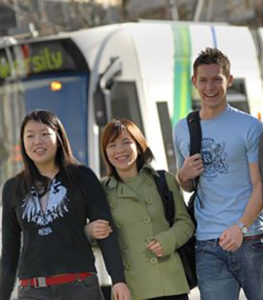International education sector booming – ABS data shows
International education contributed a record $34 billion to the Australian economy last year through hosting 690,000 students from overseas, according to Commonwealth Department of Education figures.
Minister for Education Dan Tehan said the numbers represented a 15.3 per cent rise on last year as more international students than ever before paid tuition fees and spent money on living costs.
“Over decades of investment, hard work and the commitment of world-class scholars, teachers and administrators, Australia has established a global reputation as a leader in higher education,” Mr Tehan said.
“Australia has a vibrant and high-performing international education sector, so much so the British-based Centre for Global Higher Education predicts Australia will leapfrog the UK to become the world’s second most popular destination for international students this year,” he said.
“Our Government is working to promote regional Australia as a destination for international students, so our regional communities can also enjoy the economic and cultural benefits that international students bring,” Mr Tehan said.
The data, from the Australian Bureau of Statistics’ International Trade in Goods and Services briefing shows international education contributed to a surplus in the balance of trade of goods and services of $2,796 million in December 2018, an increase of $131 million on the surplus in November 2018.
The new figures follow the adopting of a National Strategy for International Education 2025, aimed at making the sector more innovative, future-focused and globally engaged.
The National Strategy is based on three broad pillars: strengthening the fundamentals of Australia’s education, training and research system and our regulatory, quality assurance and consumer protection arrangements; transformative partnerships between people, institutions and governments, at home and abroad; and, competing globally by responding to global education and skills needs and taking advantage of emerging opportunities.
The strategy asserts that Australian international education is a world-leading brand.
It says hundreds of thousands of students are attracted to Australia each year, and Australian teaching and research is delivered around the world.
The strategy aims to provide high-quality education for students at all levels, from school through to higher education, vocational education and training and English language tuition.
International education is now recognised as a valuable component of the Australian economy and, as the nation’s third largest export earner, a major employer.
It is seen as a growth industry with some estimates saying there is capacity for sector to expand by up to thirty per cent in the next decade.
Laurie Nowell
AMES Australia Senior Journalist












